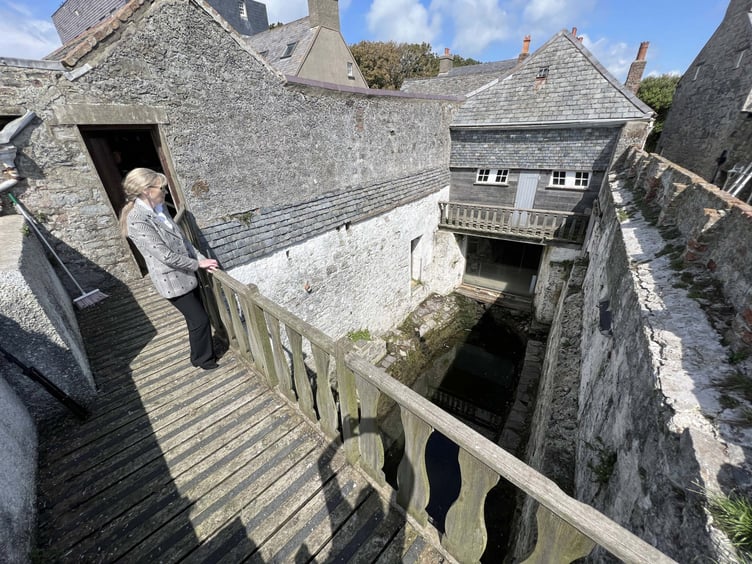Plans to revamp the nautical museum in the south have been put on display.
Manx National Heritage (MNH) has outlined extensive designs that would see the world’s oldest schooner return to its hometown in Castletown.
The Peggy has been under conservation since 2015, when it was removed from the nautical museum cellar, and now is in the heart of a £6.1 million plan to renovate the nautical museum.
The designs show that a new boat hall will be in a specially built unit within the courtyard next to the current site, as well as bringing old buildings around the site back into use.
Peggy is an armed yacht built in June 1789, and is the oldest surviving Manx craft of only a very few surviving vessels built in the 18th century.
MNH aims to raise at least half of the £6.1 million needed, and is asking the Treasury for the remainder to fund the museum makeover.
If successful, work on the site can begin in January 2024, and the completion date is set for late December 2025.
The museum, which was donated to the island and opened in 1951, tells the story of Manx inventor George Quayle, who has various impressive creations. These include a hidden bank vault in Bridge House, which is next to the nautical museum, and secret compartments and passageways in the museum itself.
However MNH are looking to improve the facility considerably, going into more detail about the maritime history of Castletown and the Isle of Man, whilst keeping Peggy as the centrepiece.
In 2021 MNH was asked by Tynwald to come back with a business case for how they can bring the Peggy back to its home in Castletown, but MNH has gone beyond that and is attempting to develop a state of the art museum to benefit the island.
Kirsty Neate, head of professional services at MNH, said: ‘We’re doing some public engagement activities around the island to talk about our transformational plans for the nautical museum in Castletown.
‘We have plans to bring Peggy back to the nautical museum and as part of the goal to bring her back we want to enhance the maritime history and stories of the Isle of Man in the 18th century.
‘So the plan is to put Peggy at the heart of those stories, but also to tell much wider stories of global wars, trade, revolutions and Manx merchants.
‘We are an island nation, and most of our territory is water rather than land. We have such rich maritime stories to tell, and the fact we have the Peggy, such a significant boat that’s more than 200 years old, is great, she’s so unique, she’s the only one of her kind left anywhere in the world.
‘For the island that is a massive tick and we really feel not only should the nation be proud of the fact we could have this incredible site but for our visitors that come on holiday – it’s a fascinating story for us to tell.’
‘I think the funding we’re looking at is actually not a massive amount when you consider what we’re trying to do here on site. We haven’t had an opportunity to invest in what we’ve got here for a very long time.
‘If you look at equivalent projects across the UK they spend massive amounts of money on heritage.’
‘I understand there are always needs and calls on the public purse, but this transformation has the potential to raise income as well.
Connie Lovel, director of MNH, said: ‘The whole site is being developed, and that’s a really important point to get across because we’re bringing Peggy back but there is actually much more than that.
‘There are buildings here that haven’t been used, so we’re bringing them back into use, and there’s a lot of disrepair around the site, and the investment that will be going in will also be addressing the conservation deficit we have here.
‘So it’s a truly transformative regeneration project for the town and for the island.
‘It will be an all-weather and more importantly an almost entirely all accessible visitor attraction.
‘Speaking to visitors we need to have more indoor activities to attract them, well this is it.
‘It’s going to be about maritime history, Peggy, George Quayle, who was the most amazing and quirky inventor, and the birth of the Royal National Lifeboat Institution (RNLI).
‘It will be engaging, informative and encouraging for people to come back for repeat visits, it’s going to be something for the island to be proud of and for us to promote off island.
‘We’ve got the castle, the old House of Keys, the grammar school, there’s so many stories to tell in Castletown and it’s particularly good for coach operators, who will be able to come to the town and let their passengers have a look around the town for hours because the dwell time will have increased and there will be something of interest to everyone.’
When asked about the funding for the project, Connie said she is aware there may be some scepticism from the public regarding asking for money from the government now.
She said: ‘I think it’s an enormous challenge for government at the moment, following the economic crisis, it is really tough times for everyone and we understand that.
‘We are making great inroads with generating our own finance, we said we would from the outset and we have been doing that, it’s important to note though that some of the commitments we have are completely reliant upon getting the rest of the funding [£3 million] and seeing that there is that political support.
‘We can’t set foot on the next stage until we have the funding secured.
‘We absolutely understand it’s challenging times but if we can secure this funding this year then this will be open to the public by the end of December 2025 into early 2026.
‘To achieve that we have to start next January, and if we don’t start then there is a delay.
Jonathan Parry, the architect from Johnson Architects who are overlooking the project, explained the design of the museum extension.
He said: ‘The construction of the new boat hall is intended to be laminated timber like the ribs of a boat and internally clad with clinker like the Peggy is constructed with.
‘Externally we’re looking at metal cladding and the idea is that internally she looks like the ship’s hull and externally it’s like sails or waves breaking over the top of the Peggy.’



-and-A-level-outstanding-creativity-award-Zoe-Durcan-(second-right).jpeg?width=209&height=140&crop=209:145,smart&quality=75)

Comments
This article has no comments yet. Be the first to leave a comment.